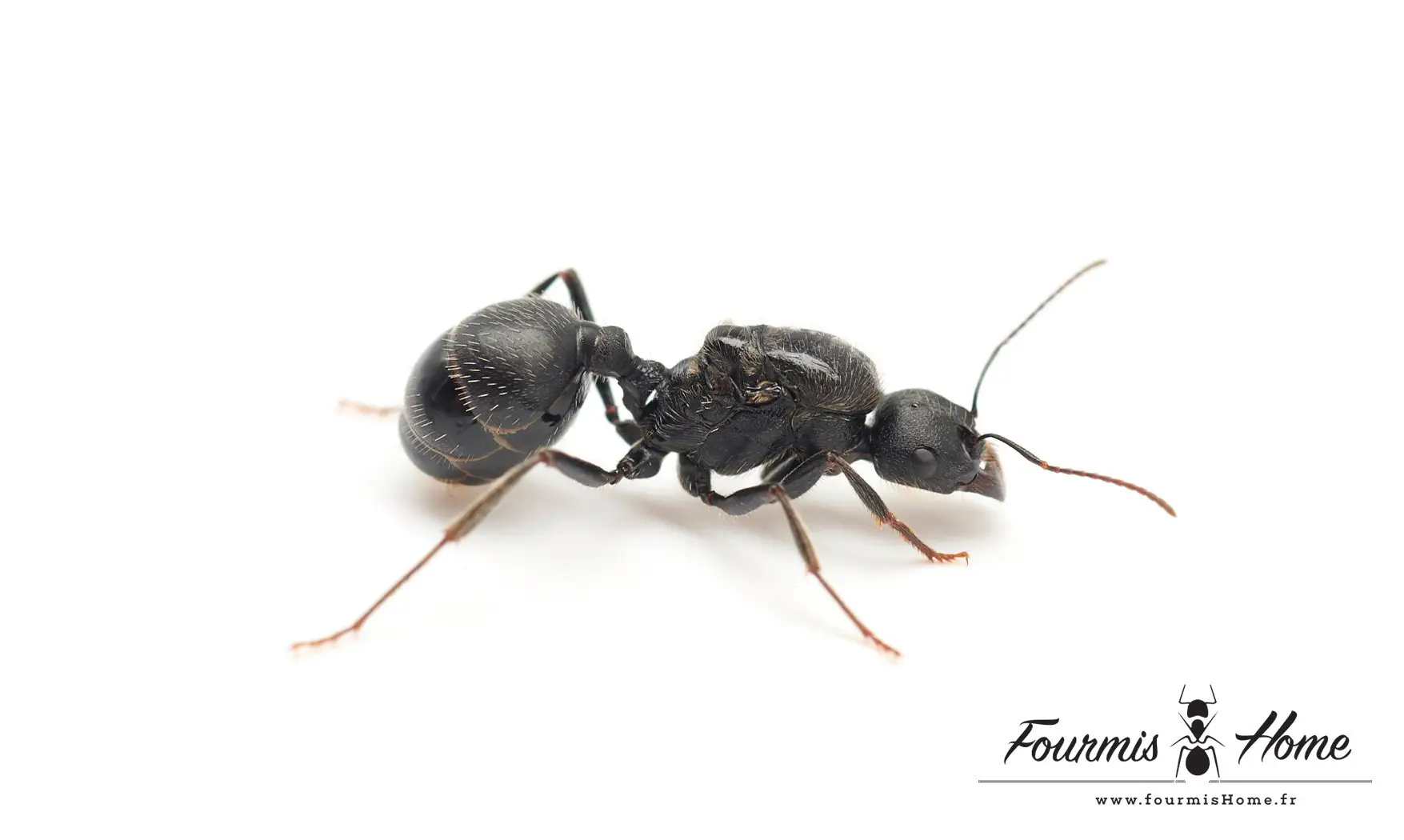







Messor arenarius
Reference : MFOUR-005
349.90€
0 in stock
Latin name: Messor arenarius (second largest species of Messor in the world)
Taxonomy: Subfamily: Myrmicinae Tribes: Pheidolini
Breeding level: Beginner
Geographical distribution: Egypt, Tunisia, Israel, southern Algeria
Habitat: Sands and steppes
Colony form: Monogyne
Queen: Size: 18 - 20mm Color: Black Mast
Workers: Size: 4 - 13mm Color: Black Mast
Major: Size 14 - 18mm Color: Black Mast
Male: Size: 7mm Color: Black
Food: Mainly granivorous that eat various seeds, but also many small insects such as mealworms, flies, mosquitoes, crickets, a water trough is mandatory for the creation of ant bread.
Humidity: Hunting area: 30 - 50% Nest: 50 - 70%
Temperature: Hunting area: 25 - 30 ° C Nest: 23 - 28 ° C
Hibernation: Yes, from mid-November to early March between 15 and 18 ° C
Nest type: Plexiglas nest, nest with tubes, reconstituted stone nest.
Description: Messor arenarius is a mainly granivorous species, very interesting to observe with the manufacture of ant bread to feed the brood, 3 different minor castes, media and major with each of the different roles, but also very good hunters once the colony becomes populous, a species that will delight fans of the genre Messor with its impressive size. It is an extremely rare species in breeding that deserves to be known.
Development: Swarming from November to December.
Foundation: Set in a cloister (without food) Development: 50 days from egg to worker (depending on temperature)
Size of the colony: Several thousand individuals, the queen can reach the age of 25 years.
Taxonomy: Subfamily: Myrmicinae Tribes: Pheidolini
Breeding level: Beginner
Geographical distribution: Egypt, Tunisia, Israel, southern Algeria
Habitat: Sands and steppes
Colony form: Monogyne
Queen: Size: 18 - 20mm Color: Black Mast
Workers: Size: 4 - 13mm Color: Black Mast
Major: Size 14 - 18mm Color: Black Mast
Male: Size: 7mm Color: Black
Food: Mainly granivorous that eat various seeds, but also many small insects such as mealworms, flies, mosquitoes, crickets, a water trough is mandatory for the creation of ant bread.
Humidity: Hunting area: 30 - 50% Nest: 50 - 70%
Temperature: Hunting area: 25 - 30 ° C Nest: 23 - 28 ° C
Hibernation: Yes, from mid-November to early March between 15 and 18 ° C
Nest type: Plexiglas nest, nest with tubes, reconstituted stone nest.
Description: Messor arenarius is a mainly granivorous species, very interesting to observe with the manufacture of ant bread to feed the brood, 3 different minor castes, media and major with each of the different roles, but also very good hunters once the colony becomes populous, a species that will delight fans of the genre Messor with its impressive size. It is an extremely rare species in breeding that deserves to be known.
Development: Swarming from November to December.
Foundation: Set in a cloister (without food) Development: 50 days from egg to worker (depending on temperature)
Size of the colony: Several thousand individuals, the queen can reach the age of 25 years.
Recommended products

